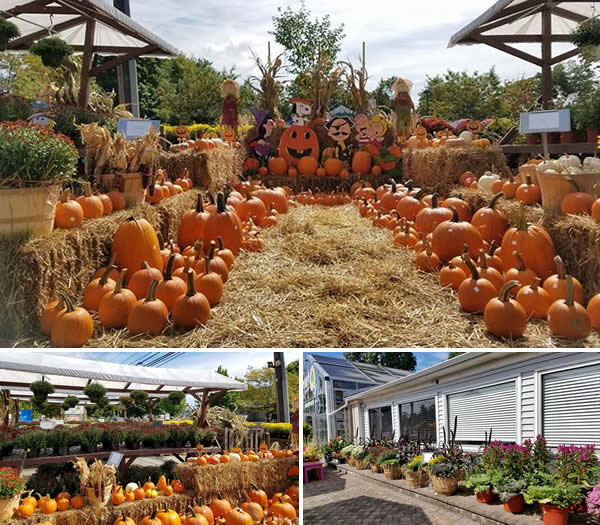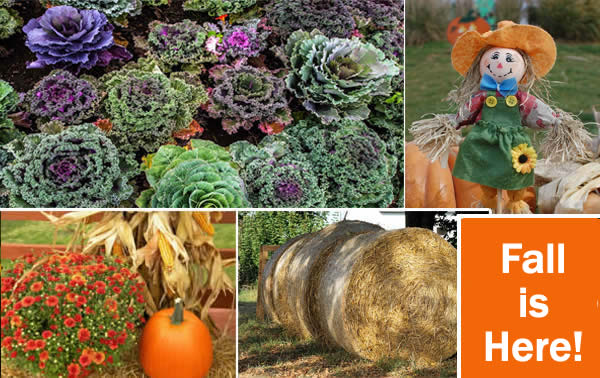
We may be busy with planning our recipes for the family festivities to come, but if we wish to reap the harvest of a thick, healthy, green lawn come next spring, we need to bundle up and get outside. It's time to prepare our cool season lawns to come through the winter in good condition.
Common cool season turf grasses include bluegrass, fescue, and perennial rye grass. These varieties love growing in the cool of fall and spring, and can handle freezing cold and snow cover. If the summer temps get too hot, these varieties turn brown as a defense mechanism and then green up again when rain and cooler weather return. In fact, the further north they're planted, the more likely they are to stay green and happy looking year 'round.
The deciduous trees that shade us and provide dappled light at day's end during the warm months, become the enemy after the first few frosts. No matter what the size of your lawn, it is vitally important to keep it free from the falling leaves. If your lawn is manageably small, use a lightweight leaf blower to clear pile-ups around the perimeter of your house. Start with your back to the house and aim the blower outwards. Rake the leaves onto a large tarp or into a kangaroo bag, using bear claws to make the job go faster. You may find yourself cursing each breeze that brings down more leaves to clean up, but why not adjust your attitude towards realizing that this necessary fall clean-up is an excuse to extend your outdoor activities. And it's great exercise as well!
If your property is larger, you might want to consider adding a tractor with leaf collecting bags to your gardening arsenal. Use your leaf blower to send those pesky leaves towards a stretch of grass, where your tractor can then pick them up. Set the blades so that you're not cutting your grass below 3" in height. Empty the bins often, and remember that wet leaves will clog the tractor. A reasonably priced leaf blower will also contain a vacuum for sucking up the tenacious leaves that settle in amongst our shrubs and flower beds.
Your lawn needs to breathe, just as you do. Over the course of the season thatch accumulates and is an especial problem for our northern grasses. Thatch is a tight, brown, spongy, organic layer of living and dead grass roots and stems. There are a couple of ways of removing it; one is by lightly and frequently power raking your lawn. Deep power raking of a thatchy lawn can prove damaging and will often remove portions of the living turf.
A more efficacious method is to rent a core aerator from your local garden center or hardware store. The cost can be split with your neighbor, as two lawns can be easily aerated in the course of a day. Core aerating will loosen up your lawn, promote deep root growth, and reduce soil compaction that can prevent your grass from developing deep roots capable of absorbing rainwater.
Finally, apply a good winterizing fertilizer. What may seem daunting tasks now will pay off in a healthy, happy lawn you can be proud to show off, come time for those barbecues!
Click to print this article.


If you have tunnels of earth suddenly appearing throughout your lawn or garden, chances are you have been paid a visit by either moles or voles.
Unlike gophers, they usually don't leave any visible entry or exit holes.
Voles are small, mouse-like rodents that are commonly called meadow or field mice, but with shorter tails, a stocky build and small eyes that distinguish them from true mice. Moles are slightly larger with longer tails.
Both can inhabit garden areas but prefer a subterranean life in the soil.
Moles are usually harmless except for annoying tunnels that can create air pockets around some plants, which can lead them to dry out faster. Moles feed on insects, grubs and earthworms and rarely consume plant materials.
The difference between them is that voles can wreak havoc in the home landscape, attacking young plants in early spring when they are emerging from the soil.
Voles clip off the young plants and dig up the seeds; they can also consume flower bulbs and vegetable crops, leaving significant damage.
Vole damage can be costliest during the winter when a shortage of preferable foods forces them to eat the inner green bark layer of trees and shrubs. The gnawing required to reach this layer can severely damage or kill many young trees, shrubs and landscape plantings.

Voles can also scar lawns by constructing runways and clipping grass very close to the roots. Though the damage done is not usually permanent, it may detract from the appearance of a well-kept garden, just as mole tunnels may. Voles also tunnel below ground and feed on the roots of trees and shrubs.
Voles have been known to travel via tunnels developed by moles to gain access to flower bulbs and other plant roots. Damage of this type is often mistakenly blamed on moles.
Voles don't always cause significant property damage--but it only takes a few voles to damage a highly valued tree or flower bed and to warrant control.
There are a number of approaches one can use against both voles and moles that are both preventative and controlling. If early in the season, consider using a repellant. Existing animals can be controlled by trapping or using toxic baits.
Simple mouse traps set together within the runway, with the triggers facing away from each other, can be very effective and no bait is needed. The use of a bait containing zinc phosphide can also be very effective, especially during the fall and spring seasons. For moles, we also recommend using a grub control product, to remove one of the mole's major food attractions.
Click to print this article.
















 If you have tunnels of earth suddenly appearing throughout your lawn or garden, chances are you have been paid a visit by either moles or voles.
Unlike gophers, they usually don't leave any visible entry or exit holes.
If you have tunnels of earth suddenly appearing throughout your lawn or garden, chances are you have been paid a visit by either moles or voles.
Unlike gophers, they usually don't leave any visible entry or exit holes.

